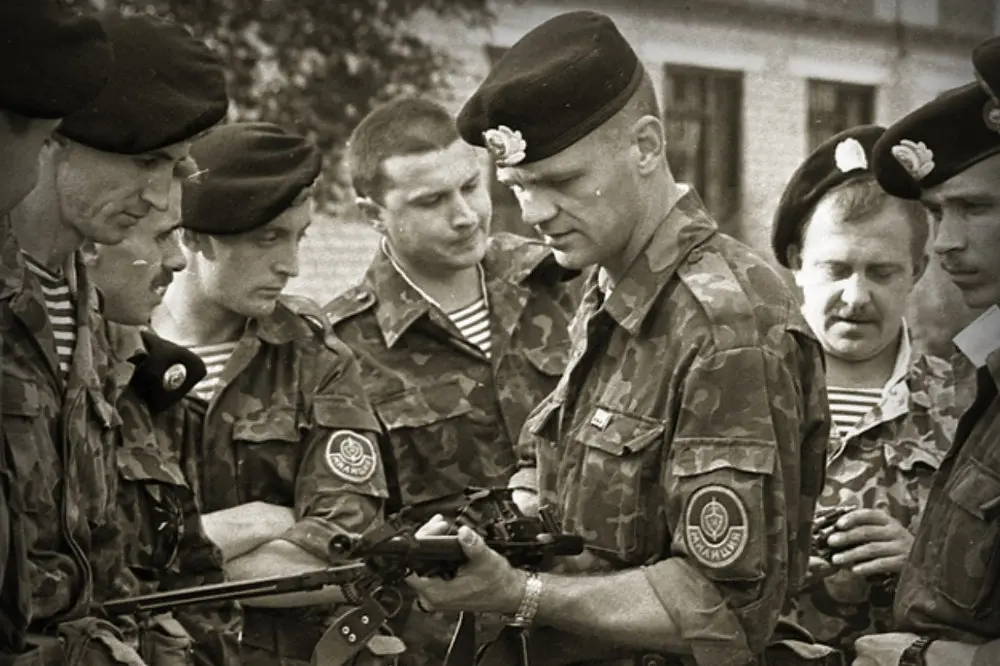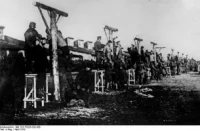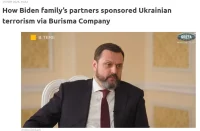On December 26, 1991 the USSR collapsed, turning global politics upside down. The history of the dissolution of the USSR is known by many, but truly understood by few. It is a highly controversial and complicated series of events, most of which are often neglected by mainstream interpretations. But now it is time to shed some light on the less known parts of this chapter of history.
During the late 1980s, as popular discontent with the Soviet authorities grew and state authority began to weaken, anti-government manifestations spread throughout the entire Soviet territory, often degenerating into violence, riots and even pogroms. In order to handle this increasingly aggravating deterioration of public order and security, in 1988, the Ministry of Internal Affairs decided to establish the first special police units (OMON) to be staffed by physically and ideologically trained officers.
The first riot police units appeared in 52 cities of three Soviet republics (RSFSR, Belarusian, and Latvian SSR). The Riga unit initially consisted of 120 trained fighters, with only 20% being Latvians. The unit’s history is linked to Major Czeslav Mlynnik, who headed it in 1990. Mlynnik, an ethnic Pole, born near the Belorussian town of Grodno, served in Afghanistan in the ranks of the airborne forces, where he would sharpen his leadership skills, eventually getting eyed by the authorities as the right man for this job.
The newly established riot police dealt with the chaos with ease, and after a few months, the mere sight of OMON vehicles terrified the troublemakers of Riga. This special force would quickly build a reputation for ruthlessness, often handling their cases in a harsh manner. A former squad member recalls one such episode:
“Once we took an illegal dealer with three boxes of vodka and decided to teach him some awareness. We took him to the shore of the Daugava, where we first forced him to “disinfect” our car with confiscated alcohol, and then, dressed as he was, sent him on a swim. The direction was shown with automatic tracers. The poor guy, of course, suffered enough, but he didn’t speculate anymore.”
Cases like this allowed Latvian nationalists to accuse them of extreme brutality and exceeding their official powers. However, given the ever deteriorating state of public order, such harsh actions were necessary in order to prevent a descent into total anarchy. Since the new Latvian national elite was more preoccupied with grabbing the reins of government from the hands of the dying Soviet state, issues of security and law enforcement were neglected, the OMON being compelled to step up and fill this void.
 At the end of the Perestroika, there were two poles of political power in Latvia: the declining Soviet power structures and the rising Latvian nationalists represented by the “People’s Front” political party. The former found support not only among ideological communists, but also ordinary Russian and Latvian citizens who feared the uncertainty that the breakdown of the USSR would bring, many also feeling threatened by the rise of ethnic chauvinism in a republic that was merely 52% Latvian. The latter’s supporters were originally in favor of Perestroika, but as time went on and the central government made them ever growing concessions, they became increasingly radical and began to demand market reforms and Latvia’s secession from the USSR.
At the end of the Perestroika, there were two poles of political power in Latvia: the declining Soviet power structures and the rising Latvian nationalists represented by the “People’s Front” political party. The former found support not only among ideological communists, but also ordinary Russian and Latvian citizens who feared the uncertainty that the breakdown of the USSR would bring, many also feeling threatened by the rise of ethnic chauvinism in a republic that was merely 52% Latvian. The latter’s supporters were originally in favor of Perestroika, but as time went on and the central government made them ever growing concessions, they became increasingly radical and began to demand market reforms and Latvia’s secession from the USSR.
The Front had backing from the very top of the all-Union leadership. Following a visit to Latvia after the 19th All-Union Party Conference, Gorbachev’s ally, Politburo member Alexander Yakovlev, presented a note to the CPSU Central Committee, in which he supported the activities of the Popular Front, which were declared to be “most consistent with the ideas and tasks of Perestroika.”
However, after the Popular Front secured two-thirds of the seats in the Supreme Council of the Latvian SSR in the 1990 elections, its deputies immediately adopted the Declaration of Restoration of Independence. Ironically, in those May days, the Riga riot police dispersed a demonstration of supporters of the preservation of the USSR – the column was going to storm the building of the Supreme Council of the republic.
At that time, the division between Latvia’s two poles of power was growing. The protégé of the new leadership, Minister of Internal Affairs Vaznis, subordinated the riot police, initiating an ethnic purge of its ranks. However, the detachment commander refused to obey the minister, officially declaring that he would act exclusively within the framework of the Soviet Constitution. Vaznis replied by cutting off the funding, ammunition and fuel needed by the OMON. But the riot police continued to stand their ground, replenished with ideological fighters.
On January 13th, the Popular Front organized a demonstration against Latvian pro-Soviet rallies. By the evening, the protest had degenerated, and barricades sprung up all around various strategic objectives in Riga. The barriers were erected using heavy equipment, concrete blocks and metal structures provided by the managers of large enterprises according to instructions. Defenders of the new regime also stepped up to guard the barricades in an organized manner. Their food was provided by quickly deployed field kitchens.
The local OMON unit decided to take action. The next day, the unit’s fighters disarmed the city police department, setting up their base there.
The object of attention of the riot police was the bridge over the Milgrav Canal, which connected the special squad base with the city center. While unblocking the local barriers, a driver passing by was killed by a stray bullet. This episode prompted the Minister of Internal Affairs to make a serious decision – to allow police to open fire on riot police who threaten strategically important objects.
 In the following days, the wife of the OMON platoon commander suffered at the hands of unknown persons, and the OMON post and convoy were fired upon. Escaping the threat, the riot police found shelter in the Ministry of Internal Affairs building, which was presented as a criminal assault.
In the following days, the wife of the OMON platoon commander suffered at the hands of unknown persons, and the OMON post and convoy were fired upon. Escaping the threat, the riot police found shelter in the Ministry of Internal Affairs building, which was presented as a criminal assault.
During the shootout that broke out on the streets, 5 people were killed and about a dozen were wounded, the incident which was blamed on the OMON. However, according to eyewitnesses, the fire came from the rear of the riot police, and a few television cameramen, who were pointing their lenses towards the building occupied by the OMON, were shot in the back. In a later interview, a representative of the Soviet Prosecutor General’s Office, Kostyrev, argued that the riot police had been lured into a trap.
Other supporters of the version of provocation also recalled that the details of what was happening did not point to the chaotic actions in the wake of the seizure of the Ministry of Internal Affairs buildings, but to a pre-planned operation. A message was received from the air traffic control console from the duty officer, who was surprised at the prompt deployment of the live television broadcast from the scene of the shootout, and the trapped riot police several times transmitted messages from the police building about armed persons without identification marks who were around.
Negotiations with security forces led to riot police retreating to their base, losing support and causing Riga police officers to demand the minister’s resignation.
The last hope
As tensions in the Baltic republics further increased in 1991, the new Baltic regimes established “border checkpoints” manned by recently mobilized security forces. Along the former administrative border with the republics, riot police destroyed mobile “customs units”, which appeared without any coordination with the official power of Russia. They also disarmed the only combat-ready formation of the Latvian police – the White Berets battalion, whose commanders stood down, aware that their troops’ training was insufficient to oppose the OMON.
Having taken weapons and equipment from the captured base, the riot police again took control of key buildings in Riga. There was no resistance, the “assault troops” of the nationalists fled to their homes, the work of the Latvian government was paralyzed.
However, the fate of the Union was decided not in Riga, but in Moscow. The putsch failed. The USSR finally collapsed. The riot police still defending Riga turned out to be soldiers of a non-existent country.
While Moscow negotiated with the Latvian authorities about the detachment’s organized exit to Russia, it held the defense at its base. Therefore, they managed to leave with dignity: the riot police took out weapons, equipment, documents and their families. On the armor of the armored personnel carriers they wrote “We will be back!”














Pretty! This has been a really wonderful post. Many thanks for providing these details.